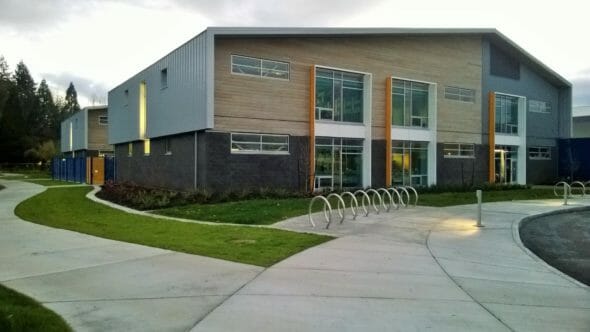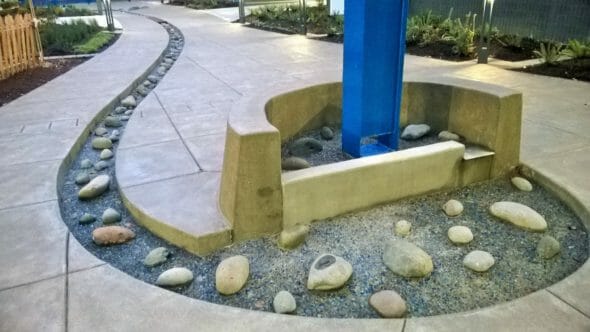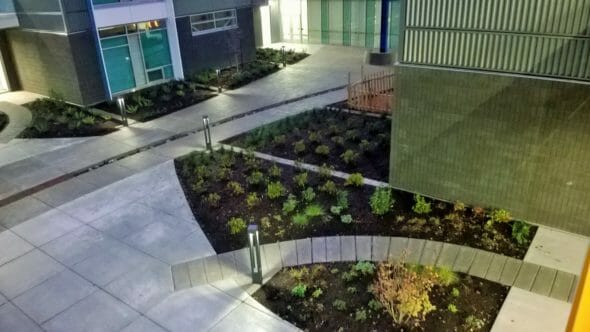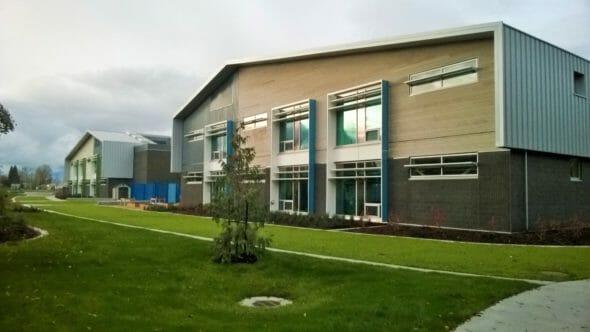Project Description
The new Howard Elementary School is a technology immersion school and features an array of state of the art systems for conservation, teaching and security. Howard is an 88,000 sf 2-story building and was constructed directly behind the existing Howard Elementary School building. The existing school was demolished and the area used for the new parking lot and baseball field. The new building features an interesting combination of exterior finishes with sidings of metal, cedar, phenolic panel and CMU veneer. The interior features polished concrete floors, glass classroom walls and reclaimed wood from the existing school demolition.
Building features:
- 55 KW Solar collection system – The electricity generated is used offset the building power consumption and a portion of the unused solar power is returned to the public utility grid and metered for additional savings.
- Daylight Harvesting – The building is equipped with large windows and 53 skylights to maximize natural light. The classrooms have light shelves and sun shades strategically placed at the windows to harness optimum natural light. The building lighting is controlled by daylight sensing equipment designed to adjust the lighting levels depending on natural light available.
- Water Reclamation – Water from the roof is collected and stored in 2 cisterns. The water from one above ground cistern is used by students to irrigate the gardens on the south side of the building. The second 15,000 gallon underground cistern supplies the buildings toilets. This water is pumped into the building through a rainwater treatment system where it is filtered, chlorinated and pressurized.
- Landscaping – The East and West courtyards feature “dry creek beds”. Each creek bed receives water from the roof during a rain event but are also designed with reclaimed blue glass in the bottom to mimic water on a dry day. Gardens are located on the South side of the building with composting areas. The site storm water drainage system is designed with rain gardens to allow water to infiltrate into the soil before entering the City storm system.














